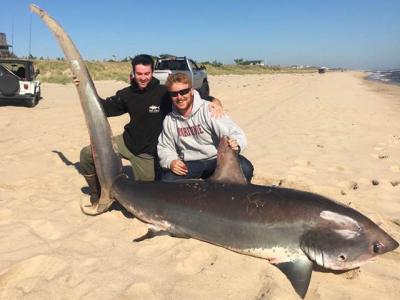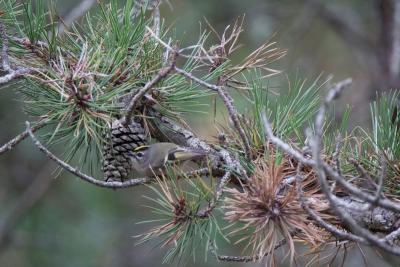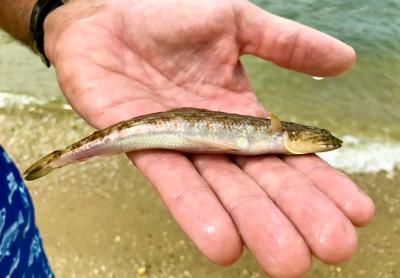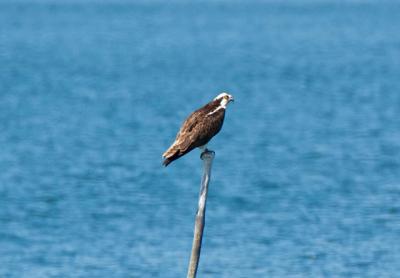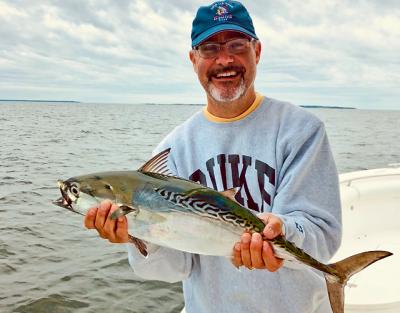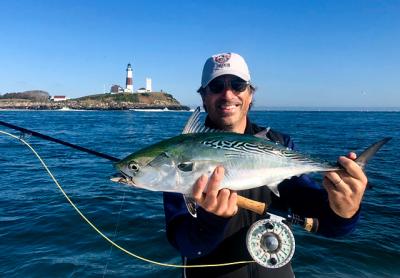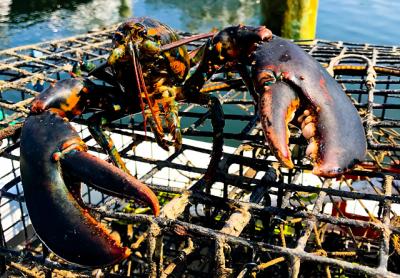The Winds of Fall
The Winds of Fall
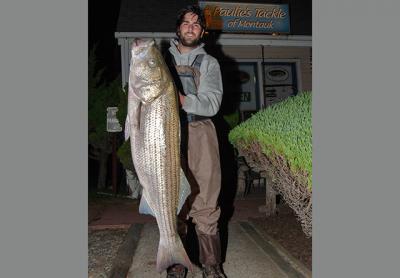
Bob Dylan did not write “the answer, my friend, is blowin’ in the wind,” here on the East End — it was probably in a brownstone apartment in Greenwich Village — but if the Nobel laureate has been in these environs over the past 10 days or so, he most certainly would have been inspired to pen that familiar refrain, as the gusty winds have been unrelenting of late, thwarting many a planned fishing trip.
The answer, in terms of fishing, was that little has been done of late.
The bushel of green crabs I secured two weeks ago and stored in my old lobster crate at my slip in anticipation of some early season blackfishing have yet to be used. Lucky for them. One of these days I hope to utilize them when the winds abate.
It has been frustrating to stay tied to the dock. The winds have been a true curse, but I was determined to get a few hours on the water on Friday morning, as a very brief weather window was forecast before gusts up to 30 knots were predicted around the noon hour. It was time to finally fish.
Rather than taking my boat out, I decided to play it safe and take a half-day trip for striped bass and bluefish out of Montauk. The boat of choice was the Lazybones, where six-ounce diamond jigs are utilized exclusively — my favorite way to pursue stripers from a boat.
Driving past East Hampton High School on the way to the dock, I noticed the outside temperature was 31 degrees. It felt like fall for sure, or even early winter. Upon arriving in Montauk, though, the temperature was a rather balmy 44 degrees, due mainly to the still-warm waters of the nearby Atlantic that surround the historical port. Not bad. While there was a rather stiff breeze out of the southwest, it was not enough to dissuade a full boat of anglers who were also frustrated by the many consecutive days of too much wind.
“We have the ebb tide all morning and the fishing has been good at the Pollock Rip when we can get out,” explained Capt. Michael Vegessi, the owner of the popular boat for the past 34 years, speaking of a significant rise and fall in the bottom located about a mile east of the Montauk Lighthouse. “We got out briefly on Wednesday morning with a light crowd, and the fishing was excellent with many keeper-sized bass thrown back. The fish are feeding heavily on large sand eels and whitebait.”
After a 30-minute ride, Vegessi eased off on the throttle and a scan of the fish finder clearly showed large schools of bait and striped bass stacked before and beyond the rip line. In addition, several large schools of hungry false albacore could be seen nearby thrashing about on the surface chasing smaller prey. The sea was teeming with life.
At the sound of the horn, all 30 anglers aboard simultaneously launched their shiny metallic jigs in unison into the turbulent tide, and it only took a few seconds before the first bass was hooked up and successfully landed. A few minutes later, just about everyone aboard was fighting a fish, either a bass or feisty cocktail-size bluefish. It was a great start to the trip. Except for me.
Another blast of the horn and it was time to make another drift into the stiff three-knot tide to repeat the action.
“Try another diamond jig,” said the seasoned captain, urging me to replace my heavier Bridgeport-style jig with a skinnier and lighter lure that most of the other fares were using successfully. It was like being lectured by one of my old college professors, who knew much more than me. I acknowledged his command.
Vegessi knows his stuff. I quickly caught a plucky 29-inch striped bass shortly into the next drift. I was off the hook, so to speak, and dinner was secured. A simple lesson was made clear: Always obey the captain.
The fishing continued at a rather solid pace for the next three hours. Some drifts were better than others, and some other fish also inhaled our jigs, including false albacore, porgy, sea bass, sea robins, and even a smooth dogfish. It was a real mixed bag and smiles were in abundance on both the starboard and port sides of the boat. All were grateful to be where they were that morning, despite the stiffening breeze.
“I hope we have a good run of bass this fall,” Vegessi said in the pilothouse on the return to Montauk Harbor. “Ever since Sandy five years ago, for some reason the stripers have bypassed Montauk on the migration south. The bass fishing has stopped by mid-October, so I hope things finally change this fall. Time will tell. So far, so good.”
And perhaps the answer to that will be found blowing in the wind.
One thing that the wind has not stopped is the excellent run of striped bass taking place from Georgica all the way eastward to Napeague. “I’ve been selling diamond jigs like crazy; they are the hot lure right now,” said Sebastian Gorgone of Mrs. Sam’s Bait and Tackle in East Hampton. “The key is to fish them low and slow on the retrieve. It’s the best fall action I’ve seen in five years. Lots of nice fish, too.”
Gorgone was equally enthralled about the annual Halloween run of squid underway at the commercial dock in Three Mile Harbor as well as at the jetty entrance. “The action has been excellent on squid jigs,” he added. “People are filling up buckets of them.” As for blackfish fans, anglers are chomping at the bit for a chance to get out when the conditions calm down.
Over at the Tackle Shop in Amagansett, the owner, Harvey Bennett, also raved about the excellent bass bite happening just down the road from his shop, “even in the wind,” he said. “Fish a skinny lure like a diamond jig and you’re almost guaranteed dinner. It’s been that good.”
Bennett also confirmed that false albacore remain thick in Gardiner’s Bay, as well on the east side of Gardiner’s Island. “The water is still very warm,” he said. “They should be hanging around for a while more.” He agreed with Gorgone that squid were “thick in Three Mile Harbor.”
Bennett also expressed thanks to those who recently donated used baseball equipment and school supplies for underprivileged children in the Dominican Republic. “The outpouring of support has been tremendous,” he said. He plans to ship another box or two of the wares to the country shortly, and it’s not too late to donate more, he said.
Back on the surf scene, there was a change on the leaderboard in the hotly contested Montauk Locals Surfcasting Striped Bass Tournament, as Nick Apostolides landed a solid 41-pound bass late last week. It was the largest striper landed by the dedicated angler. The contest continues until the end of November.
—
We welcome your fishing tips,
observations, and photographs at
[email protected]. You can find the
“On the Water” column on Twitter at
@ehstarfishing.

